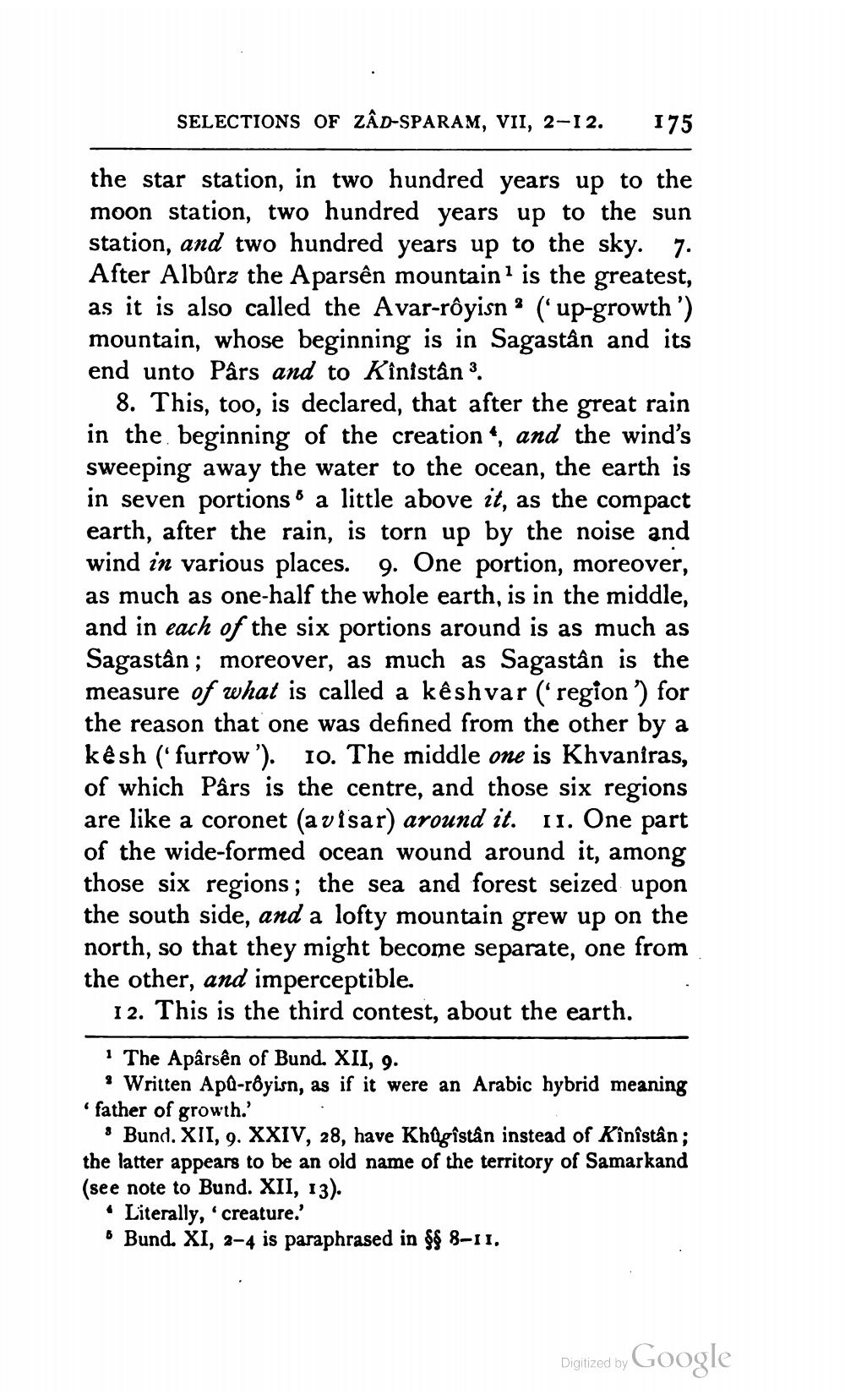________________
SELECTIONS OF ZÂD-SPARAM, VII, 2–12.
175
the star station, in two hundred years up to the moon station, two hundred years up to the sun station, and two hundred years up to the sky. 7. After Alburz the Aparsên mountainis the greatest, as it is also called the Avar-rôyisn('up-growth ') mountain, whose beginning is in Sagastân and its end unto Pârs and to Kinistân.
8. This, too, is declared, that after the great rain in the beginning of the creation, and the wind's sweeping away the water to the ocean, the earth is in seven portions 6 a little above it, as the compact earth, after the rain, is torn up by the noise and wind in various places. 9. One portion, moreover, as much as one-half the whole earth, is in the middle, and in each of the six portions around is as much as Sagastân; moreover, as much as Sagastân is the measure of what is called a kêshvar (region) for the reason that one was defined from the other by a kêsh (“furrow'). 10. The middle one is Khvaniras, of which Pârs is the centre, and those six regions are like a coronet (a visar) around it. 11. One part of the wide-formed ocean wound around it, among those six regions; the sea and forest seized upon the south side, and a lofty mountain grew up on the north, so that they might become separate, one from the other, and imperceptible.
12. This is the third contest, about the earth. · The Apârsên of Bund. XII, 9. : Written Apa-rôyisn, as if it were an Arabic hybrid meaning 'father of growth. .
• Bund. XII, 9. XXIV, 28, have Khôgîstân instead of Kînîstân; the latter appears to be an old name of the territory of Samarkand (see note to Bund. XII, 13).
. Literally, 'creature.' • Bund. XI, 2–4 is paraphrased in $$ 8-11.
Digitized by Google
Digitized by




